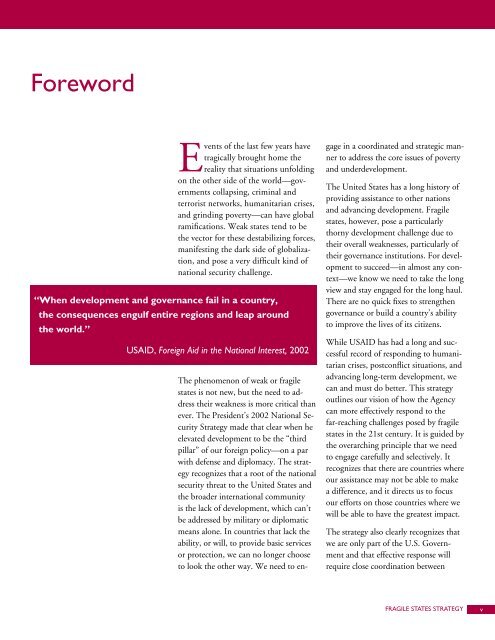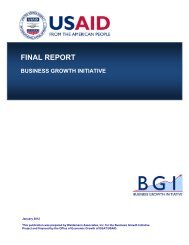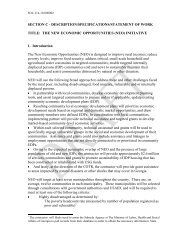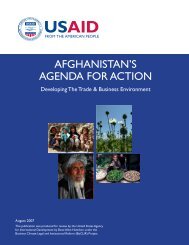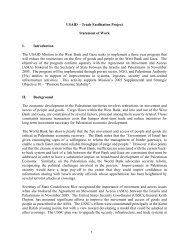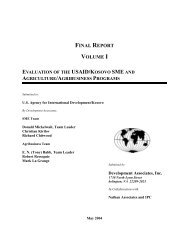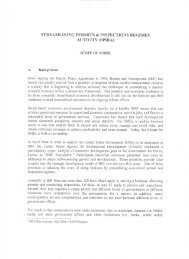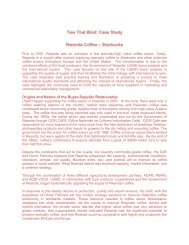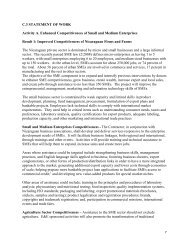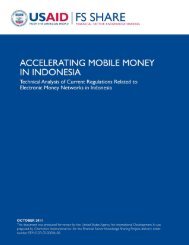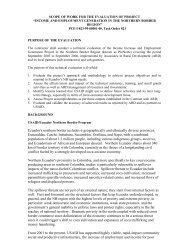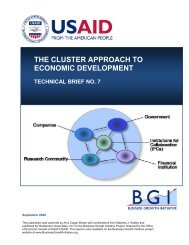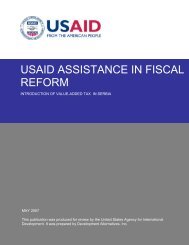USAID Fragile States Strategy - The Air University
USAID Fragile States Strategy - The Air University
USAID Fragile States Strategy - The Air University
- No tags were found...
Create successful ePaper yourself
Turn your PDF publications into a flip-book with our unique Google optimized e-Paper software.
ForewordEvents of the last few years havetragically brought home thereality that situations unfoldingon the other side of the world—governmentscollapsing, criminal andterrorist networks, humanitarian crises,and grinding poverty—can have globalramifications. Weak states tend to bethe vector for these destabilizing forces,manifesting the dark side of globalization,and pose a very difficult kind ofnational security challenge.“When development and governance fail in a country,the consequences engulf entire regions and leap aroundthe world.”<strong>USAID</strong>, Foreign Aid in the National Interest, 2002<strong>The</strong> phenomenon of weak or fragilestates is not new, but the need to addresstheir weakness is more critical thanever. <strong>The</strong> President’s 2002 National Security<strong>Strategy</strong> made that clear when heelevated development to be the “thirdpillar” of our foreign policy—on a parwith defense and diplomacy. <strong>The</strong> strategyrecognizes that a root of the nationalsecurity threat to the United <strong>States</strong> andthe broader international communityis the lack of development, which can’tbe addressed by military or diplomaticmeans alone. In countries that lack theability, or will, to provide basic servicesor protection, we can no longer chooseto look the other way. We need to en-gage in a coordinated and strategic mannerto address the core issues of povertyand underdevelopment.<strong>The</strong> United <strong>States</strong> has a long history ofproviding assistance to other nationsand advancing development. <strong>Fragile</strong>states, however, pose a particularlythorny development challenge due totheir overall weaknesses, particularly oftheir governance institutions. For developmentto succeed—in almost any context—weknow we need to take the longview and stay engaged for the long haul.<strong>The</strong>re are no quick fixes to strengthengovernance or build a country’s abilityto improve the lives of its citizens.While <strong>USAID</strong> has had a long and successfulrecord of responding to humanitariancrises, postconflict situations, andadvancing long-term development, wecan and must do better. This strategyoutlines our vision of how the Agencycan more effectively respond to thefar-reaching challenges posed by fragilestates in the 21st century. It is guided bythe overarching principle that we needto engage carefully and selectively. Itrecognizes that there are countries whereour assistance may not be able to makea difference, and it directs us to focusour efforts on those countries where wewill be able to have the greatest impact.<strong>The</strong> strategy also clearly recognizes thatwe are only part of the U.S. Governmentand that effective response willrequire close coordination betweenFRAGILE STATES STRATEGYv


